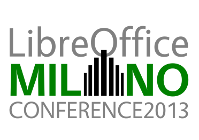LibreOffice Architecture for Mobile Devices
Strategies for architecting LibreOffice based mobile applications
Details of the Talk
The mobile market is growing rapidly with smartphones and tablets devices, introducing new mobile platforms such as iOS and Android which don't have any dominant office suite. These devices are open for new productivity players to disrupt Microsoft's dominance in the traditional PC platform. This big opportunity makes this market very interesting for office projects like LO with its strong code base to win this mobile emerging market which also accelerates its desktop suite success.
Using LibreOffice in a mobile environment introduces many new challenges: mobile devices have a weaker CPU and less memory than their desktop counterparts which results in much more code optimizations. Additional challenges include the architectural differences between mobile OS and desktop OS, the touch interface common on mobile devices with its unique behaviors like zooming and panning, as well also restrictions on mobile code, license and distribution.
In this presentation we will discuss several approaches to using the LibreOffice stack in mobile apps. Discussing which portions of the LibreOffice code can be reused and which should be rewritten natively. How to integrate an app's main message loop with LibreOffice's main message loop. How to make an app responsive with background rendering. How to implement and optimize touch gestures. And issues like reducing the binaries' size and improving start-up time. We will show a demo of work we have done developing a proof of concept native app for iPad based on LibreOffice.
Content
- Using LibreOffice as document engine in 3rd party applications
- OS UI vs LO UI rendering - several approaches to be discussed.
- Gesture implementations options:
- scrolling in pixels - following the finger.
- zooming around the gesture center
- Rendering performance optimizations
- LibreOffice app running native on iOS demo
